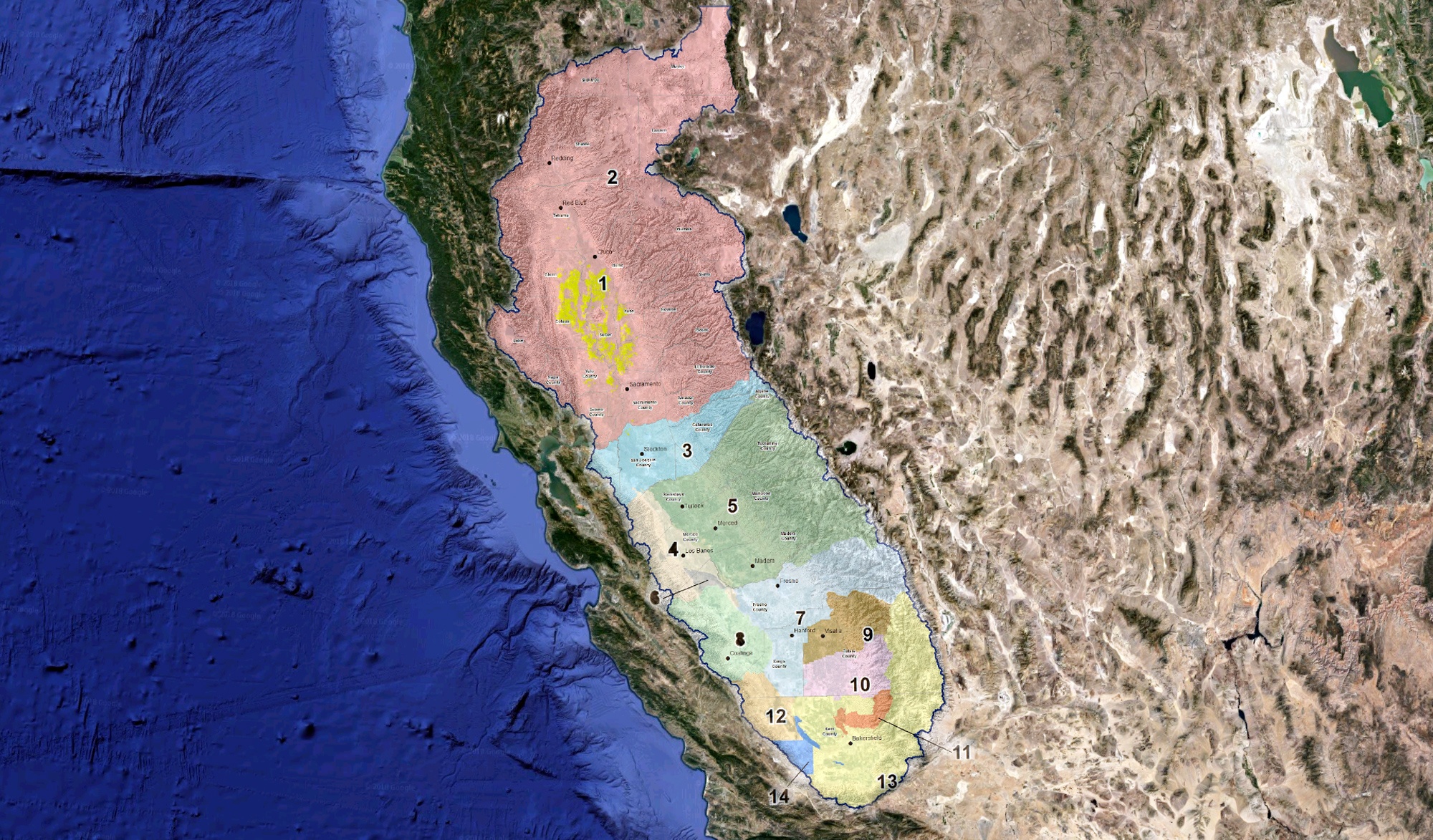
Since the State Water Board voted to change nitrogen reporting rules on February 7, Ceres Imaging blog has covered the issue to share information about how it will affect almond growers and others in ag around the state.
Coverage includes:
- State Water Board revises nitrate rules, sets model for regional water boards
- Parry Klassen of East San Joaquin Water Quality Coalition talks ILRP changes
This week, we spoke with Darrin Polhemus, Deputy Director for the State Water Board's Division of Drinking Water. This Q&A was condensed from a longer conversation.
Q. Are the overall outlines of this order more reporting for growers?
A. First of all, I wouldn’t categorize it as a whole bunch of new reporting. To me, we certainly have added a bit more reporting, and we’ve added groups that may not have been reporting before. There are some people who now might have to report that weren’t.
For those that were already reporting, we refined what they were already reporting, we didn’t dramatically increase it.
I know people are certainly sensitive to the reporting and we are too, which is why we actually reduced the frequency, for instance of Farm Evaluation reporting, so that it could try to limit our impact on the regulated community--it’s always key.
Q. How will that work?
A. The Farm Evaluation went from every year to once every five years.
We pulled out pieces that we need annually, like the irrigation component and we put that in what used to just be the Nitrogen Management Plan summary, and now it’s the Irrigation & Nitrogen Management Plan summary.
The other thing we separated from the Farm Evaluation was questions that would pertain to implementing management practices as part of being in a groundwater quality management plan, or a surface quality management plan.
If you’re in one of those, and then as part of those the coalition’s having you do management practices, those can now be reported on whatever frequency is appropriate through the Management Practice Implementation Report, the MPIR as we created that one.
That allowed us to say, all right, well, the Farm Evaluation component is now only valuable on a once every five years frequency, as far as we can see. The (water quality) Executive Officers have the ability to increase that as they see necessary, but everybody seemed to be in favor of that for the most part.
Q. For the Nitrogen formula, how will that be calculated and what will growers need to do?
A. We tried to simplify it down so the growers apply two known, measured values (nitrogen applied, and crop yield).
They should have a measurement of how much they applied, based on the fertilizer rates they put on. There is some calculation to get that because when it’s a 15-10-10, and you know you put on 100 pounds, it’s 15 pounds of it that was nitrogen. The coalition has materials on how to calculate that out depending on the material they used.
The same for the yield: the coalition will have to communicate on how they want that reported and in what units, and it will vary by crop, some of it will be weight-based, and some of it will be volumetric. Number of lugs, or bales of cotton, or whatever the industry, or that particular crop tends to use as their general matter of course, that’s what we encouraged the coalitions to use.
Q. Will the recording of yield data as a new number for the East San Joaquin start in 2019, and turning it in for the summary reports start in 2020?
A. That’s right. (For the statewide rule) it defers to the regional boards. We give the regional boards five years to modify their existing order to comport to this. And in that order (modifying it) they will set the timeframes.
It will go through a public process.
Q. What’s the main takeaway you would highlight for growers?
A. The big thing is, this does fundamentally change our nitrogen management for agricultural lands. It does it...to improve on-farm efficiencies, which hopefully then has economic benefits for the farmers, and hopefully offsets the fact that there is a cost for reporting this to us.
Then certainly it will lead to improvements overall for the communities in the ag areas that have to deal with nitrate impacts. Communities and individual domestic well users. Farmers live on these properties and they’re going to experience the impacts themselves to their own drinking water sources.
It’s a fundamental shift and it all comes from the ag expert panel report. We tried to implement the guidance that we got there from them about how to reshape this from a regulatory context and an environmental management context.
